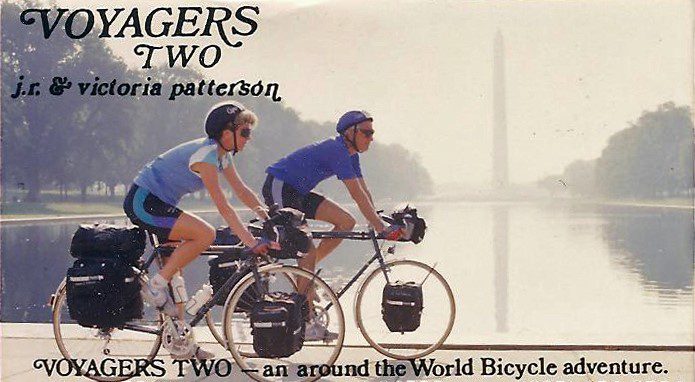When I ask why he wanted so badly to cycle the Soviet Union, Pat Patterson laughs: Because it was there, and they told me I couldn’t go, no, nyet!
This 82-year-old energetic man from California has spent more than 7 years cycling the world and was the first American to cross the USSR by bike. Now, to save his adventures from oblivion, he uploads the videos and photos from his trips on YouTube, and they are quite different from what most vloggers are serving these days.
I talked to Pat about his adventures in what US President Reagan had called, “The Evil Empire”. He also told me about his books and how travelling on a bicycle can be a lesson on how to better know and understand the world.
Getting permission to cycle across USSR wasn’t easy for you. Most people in America wouldn’t even think of going there. How did you come up with the idea, and what did people at home tell you when you started your efforts to organise your voyage?
It was a closed society, and it was troublesome to get in. Travelling was only possible with Intourist, the official travel agency of the Soviet Union: you had to go on their bus, their hotel, their places, they took you where they wanted you to go, and they showed you the best of everything.
My father said: “don’t go there, please. I’m afraid they will kill you.”
You only know what you know, and he thought the USSR was very dangerous.
I was 49 years old then, and I was fairly connected here. I had a business, and I knew people. On our way across the USA, we visited one Congressman in Washington, DC. I told him I was trying to get permission to cycle the Soviet Union.
He said: I wouldn’t touch that place with a 10-foot pole. He was a good conservative Republican, those guys I got much over in my life. As you travel that happens. You begin to understand that most people are the same. Only governments are quite different.
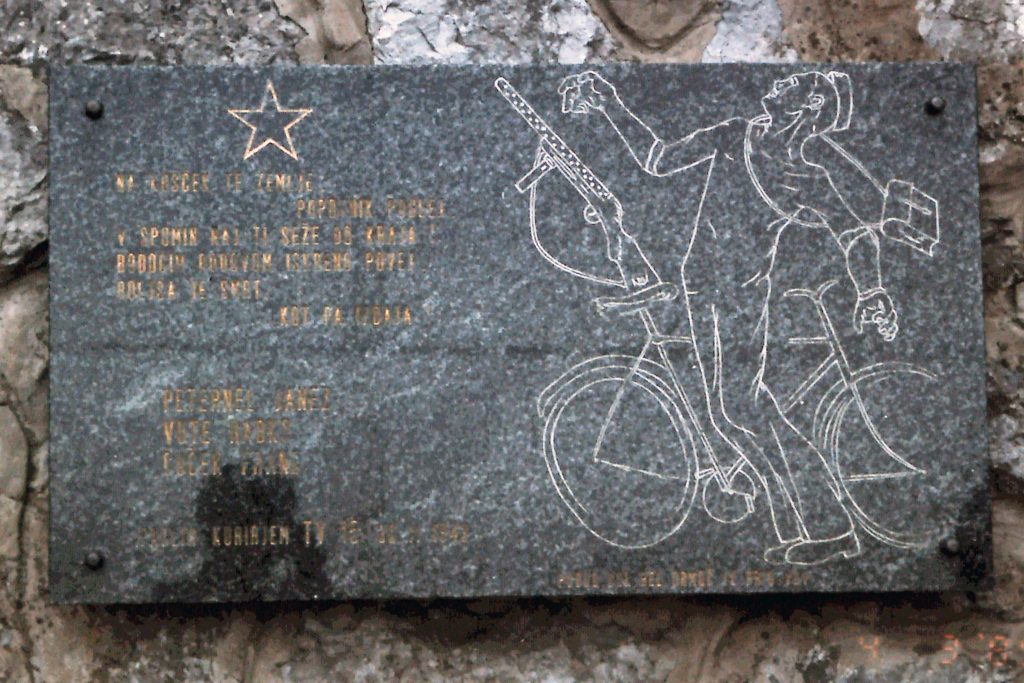
When I asked: “Why did I want to go there?” You said: “I don’t know, “because it was there and they said I couldn’t go. I didn’t don’t like that.“
Even my wife Victoria, who cycled through Europe with me, said: Why do you think Pat Patterson can get permission to ride his bicycle in the Soviet Union? We were at the beginning of separation then. She wanted our life back and didn’t like what we were doing. But once we managed to get the permission, she decided she wanted wants to see the USSR too.

How was the whole process of getting the permission? You were rejected multiple times.
First, I went to Intourist. They said nyet and suggested I go to some sportspeople. I called two sports companies. No, no yet, not possible.
I always sent copies to Gorbachev. He always talked about the changes, glasnost and perestroika. I would write to him: where is perestroika? Where is glasnost?
I don’t know if the letters ever got came through, but I think maybe his office sent me to an organisation called Soviet Travels for Peace and the Environment.
And then, this guy called Michael called: I can make your trip possible. I said, how do you do that? He asked how long I wanted to cycle. I said 99 days. How much can you pay per day? I said, a hundred dollars a day. He said: send me $9,900, and your trip is possible.
That’s how I got there. I was 49 years old, and I worked hard all my life to do something different. After all my efforts, Michael made it happen.
I sent Michael the 9,990. He was associated with a travel company here in California. I talked to them, they said, Michael Harshan is a straight-up guy, and he’ll treat you right. They put together the itinerary, with all hotels and travel arrangements and a team to go with us. We couldn’t do it without the team.
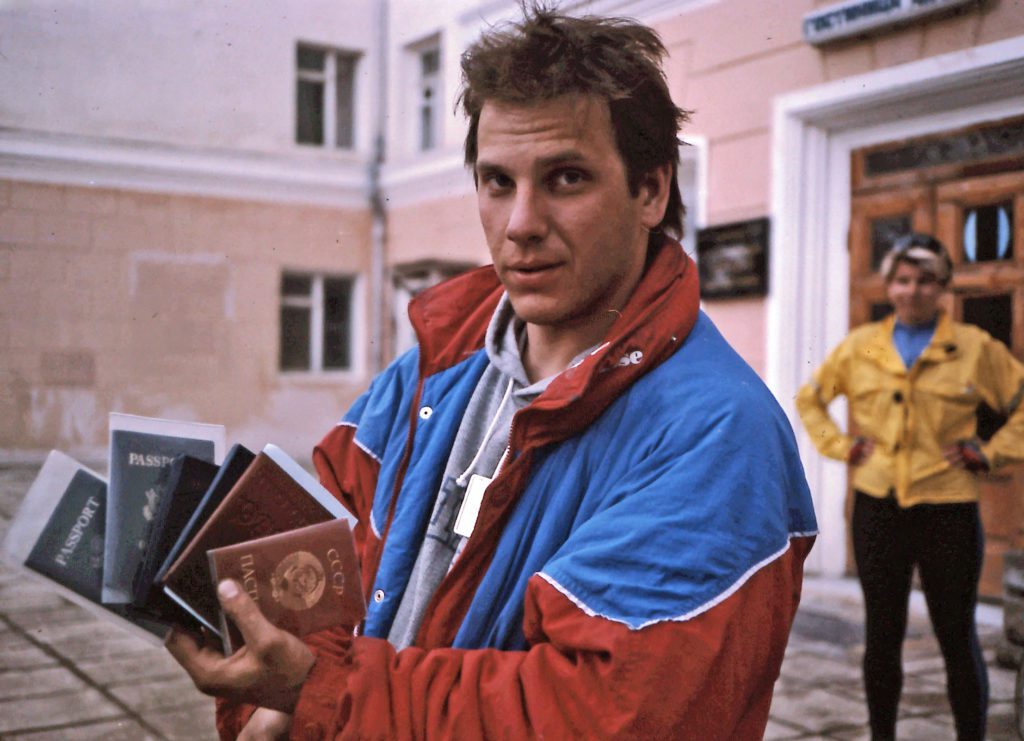
I met with the Soviet peace committee at a big round table. One woman asked: how do you get so much money for this trip? I said: hard work and prudent investment. And Michael Harshan laughed: they don’t know it. They haven’t heard about investment in 70 years.
Michael was very straightforward. He said, do you have any dietary requirements? At that time, we were semi-vegetarians. I said: we don’t eat red meat. He chuckled and said: “that’s good, we don’t have red meat in the Soviet Union.”
Can you tell me more about the itinerary?
I and my ex-wife Victoria started our cycle trip from our home in Ventura, California. We cycled across the USA, on Iceland, in England, France, Switzerland and Italy, and then crossed into Yugoslavia and Romania.
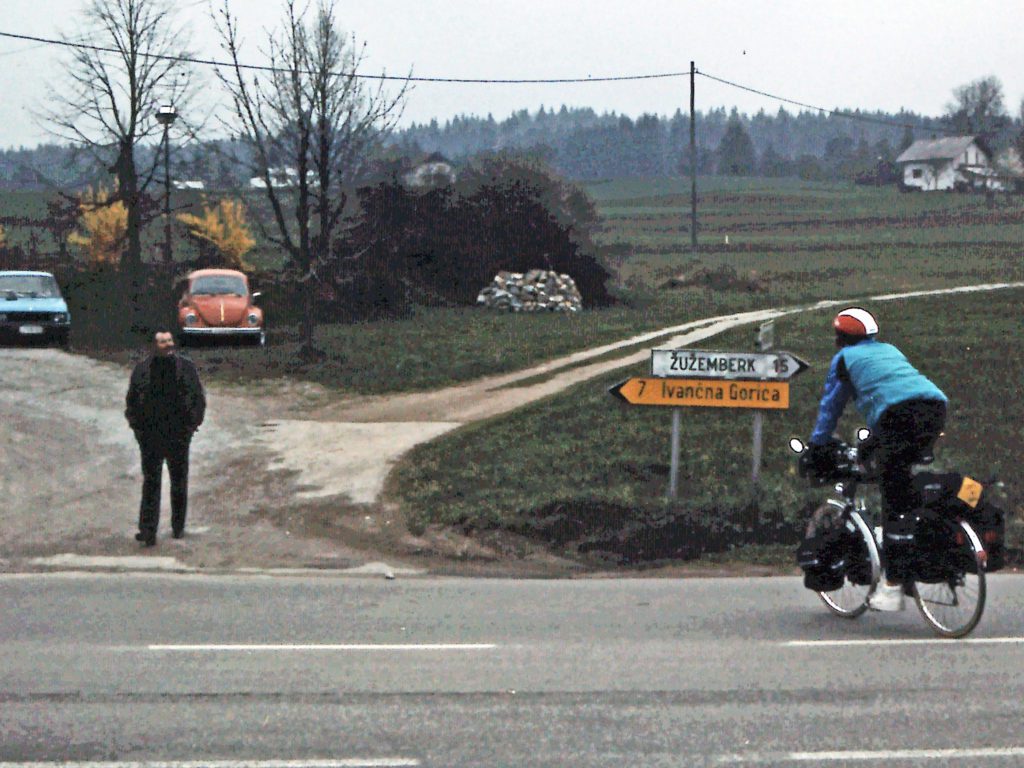
My desire was to cycle across the USSR. We entered from Romania and travelled through seven republics: Moldova, Ukraine, Russia, Georgia, Azerbaijan, crossed the Caspian Sea by ferry to Turkmenistan and then to Uzbekistan.
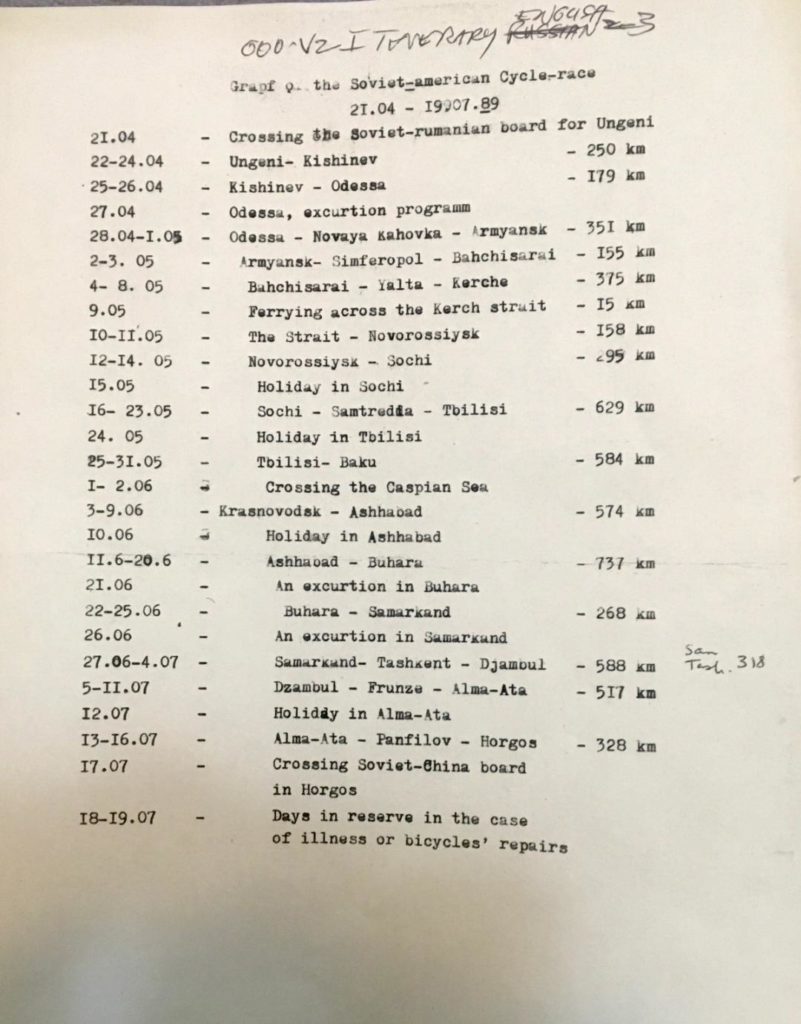
Of course, it would’ve been more interesting to try to cross all the way through Russia. I know some guys that did shortly after my trip or even during my trip, they were the second to cross the Soviet Union.
They started in the far east, from Kamchatka. They went all across Russia, the roads were difficult, and they had a terrible feeling about the Russian people.
I didn’t see that. I thought the people were good, only the rules were difficult.
Speaking of rules, tell me about the challenges you’ve encountered both in authoritarian Romania and the USSR.
In Romania, it was very dark times and very poor people. At the border of Moldova, the government sent somebody. They came into our room while we had dinner and erased all my audio and video records. I had a little audio recorder that I used instead of taking notes. I ran it back to check and see where I left off the last time, and the whole tape was blank. Oh my God.
I checked the tape on my camera. It was blank too. They erased all the videos, audio and photographs that we had. So we only have about 10 minutes of what would have been 2 hours of video from Romania. Victoria said, “Call the police!” She didn’t understand, it was the government and police who had robbed us!
When we were in Crimea, the local government military came to our hotel and told us to get out.
Dima, our guide, told them we were tired after cycling 70 miles, and we cannot leave. We had permission to be there. They didn’t care about permission. Eventually, they made a deal. We had to cross the border and leave the territory of Crimea at 8:00 AM, so we had to get into Dima’s car instead of cycling for 100 kilometres there.
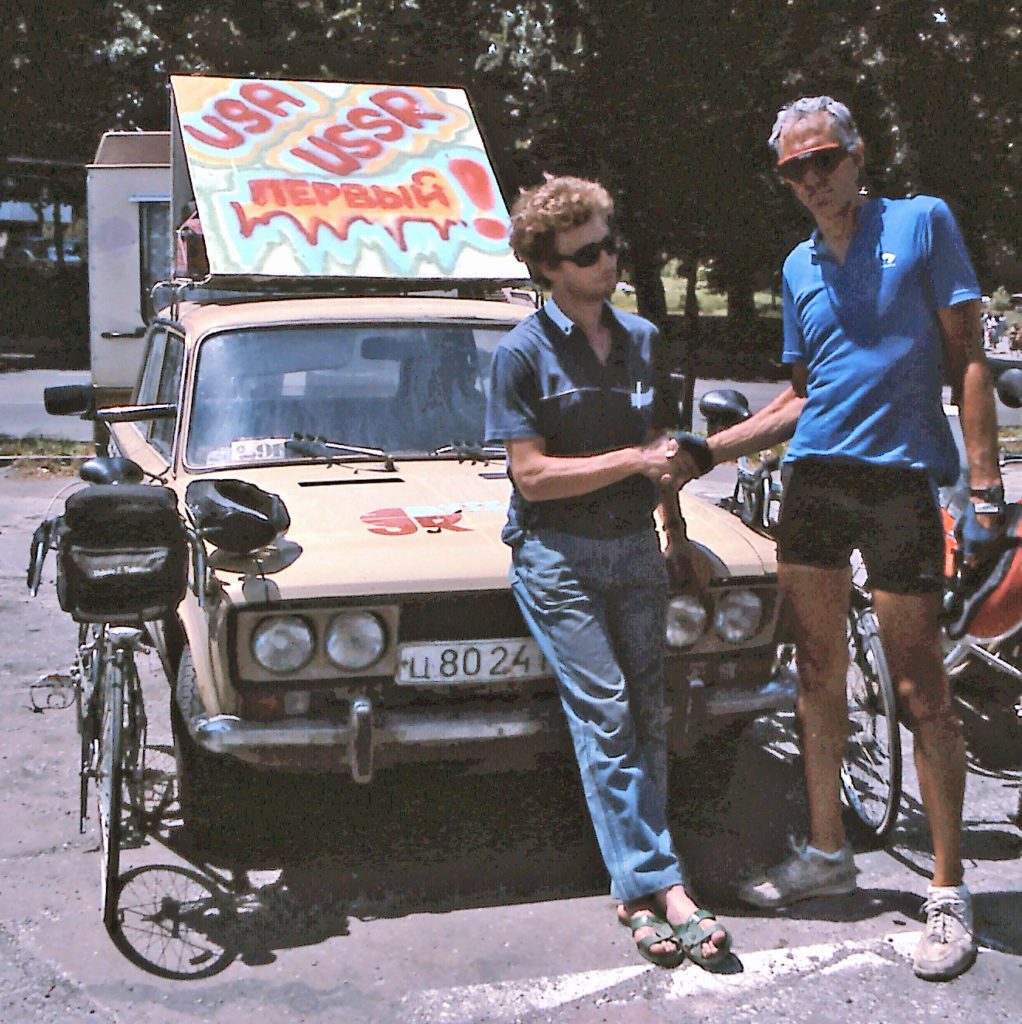
I assume that travelling across the USSR meant a lot of bureaucracy?
Yes, Dima and Sergei had a whole folder, three inches thick. Every time we came to a checkpoint, they would have to give that notebook to the police that tore some pages out, and everybody signed some papers. It was always Soviet Power (government), Military Power, local Police Power.
There were also two Sashas in our team, and Dima told me recently he always thought the short Sasha was from the KGB. He said KGB was concerned about the Soviet Peace Committee. They had their members keep an eye on it.
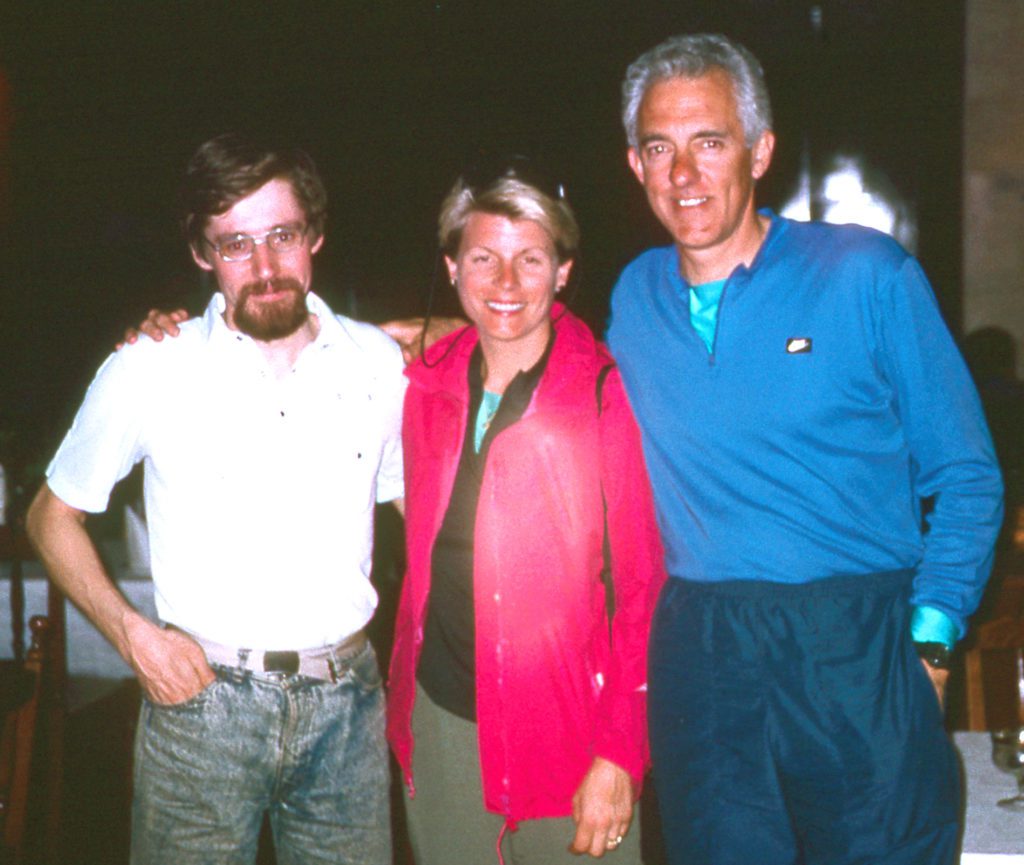
You wanted to see how life and the people in USSR really are. How did you communicate with the locals since you don’t speak Russian?
We had a 19-year-old girl, Allah, cycling with us. She was from Russia, and we would ask her to ask the people questions. She did a great job, so we could communicate quite well.
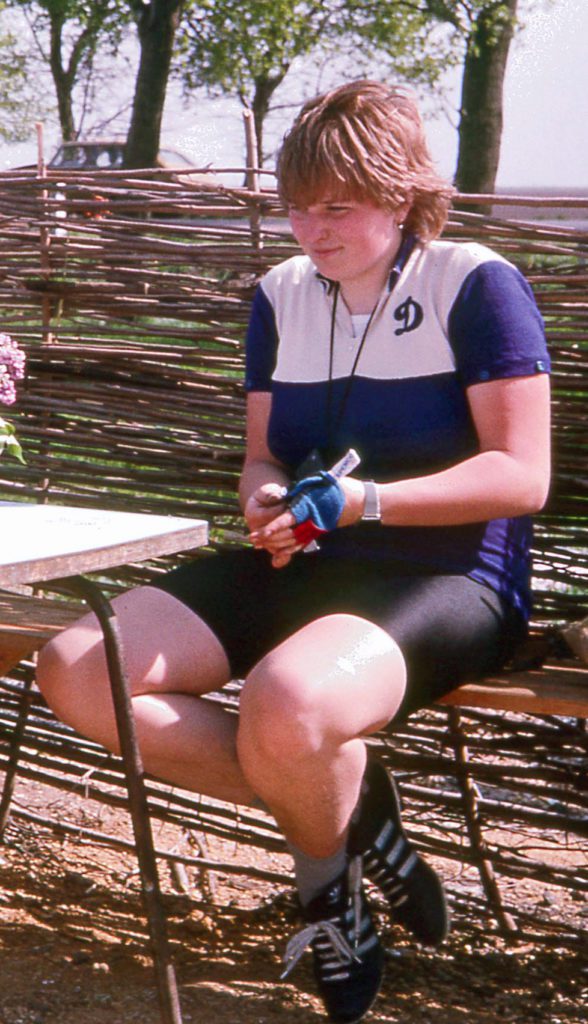
People were very excited that Americans had come there.
Those days the only Americans were tourists on organised bus tours in regions like Sochi, driven from one place to another and seeing what the government wanted them to see.
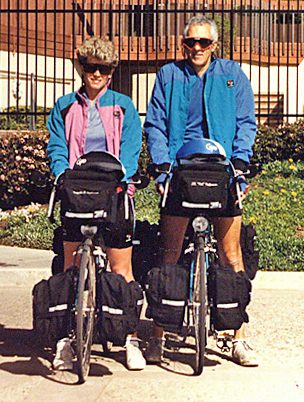
What was your impression of people and the country? How much did your perception change from what you thought before you went there?
You only know what, you know. In the United States of America, we heard that they were just like us, only powerful. They had bombs, they had planes, they could take over the world.
They were going to make atomic and hydrogen bombs and blow up the US. That was what we heard. And we thought, well, when we go there, it’ll be just like here, in the USA. But it was different, very different. All government-owned businesses, government-owned restaurants were not very good.
We stayed in hotels, even communist party headquarter little motels, so it was interesting. And the government was quite different from here in the US.
Through the different republics, there was quite a lot of oneness in food and drinks. But people were quite different. You could even see it looking at the statues of Lenin: the further east you went, to the Stans, the darker his skin was, and his face looked more middle-asian like the faces of the locals. I found it also interesting that every republic retained their own language despite Russian being the official language.
What about the common people?
The people are just like here. They only know what they hear. I was interviewed by Pravda, the government newspaper. I said, I can do the interview, but I wanna see a copy of it before you put it in the paper.
They made a big deal out of it like I was there representing the USA on a peace tour. I had a cycling jacket that said the world is not flat, which was a joke, referring to the world being ROUND and for a cyclist, there are always mountains to climb. And he wrote: they have jerseys that say peace slogans on the back.
I wasn’t gonna get caught up in all that. That’s politics. I was just there to observe and talk about what I see, not what the Soviet government or my government wanted me to see.
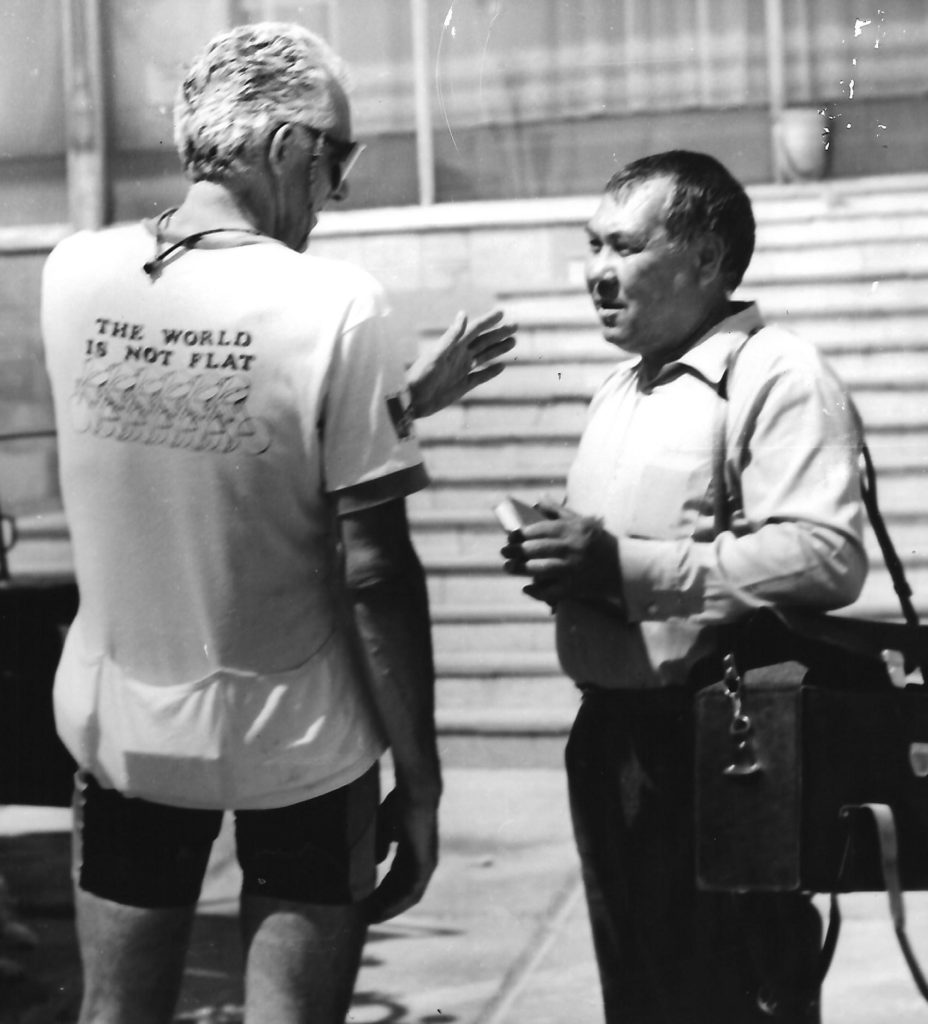
You travelled through USSR in very turbulent times. How was it to witness all the change happening at that time?
When we arrived in Georgia, we came across people marching and protesting about the things in the Soviet Union, which was very unusual. It was a couple of weeks after the massacre in Tbilisi (April 9 1989), where over 20 people were killed. Everybody was sad there.
Short before we visited Uzbekistan, there was an uprising. A lot of people were killed. Uzbeks were killing Turks.
Papa Joe Stalin was nervous about all the Turks along the border with the Soviet Union during the World War II war, and he moved a hundred thousand over in the “Stans”. They didn’t get along with the Uzbeks very well because they were smaller families and were hard workers with different working styles than people in the Soviet Union. The Uzbeks usually had eight or nine children, while the Turks had one or two.
I asked an Uzbek man what happened. Why were they killing these people?
He said: because they have all these strawberries. I said: you kill people for strawberries? Yes. They have everything, we Uzbeks get nothing.
That was an interesting lesson in the growth of private industry inside the Soviet Union in those days.
You came back to Russia with your wife Cat in 2003. How different did it feel?
The main differences were noticeable in the big cities, not so much has changed in the countryside which was still very poor.
In Moscow, in 1989 there were only Ladas, and now there were Porsches, Mercedes, Rolls Royce. All the upscale stores were there, and goods from the US and other places were offered. It didn’t have the crowds of people wandering around just looking.
The world has changed so much. Russia is now trying to rebuild the Soviet Union but I don’t think that Putin took into account that no matter how you try, you can’t be a closed society now.
You were documenting your trips with a camera. Back in the ’80s, the gear was quite different. What camera did you use to film your trip?
I bought a Hitachi video camera when we started bicycle touring in 1988. It was as big a deal, probably a bigger deal than the guys in gals that cycle now with a drone that follows them. Mine was a handheld video, a little bumpy.
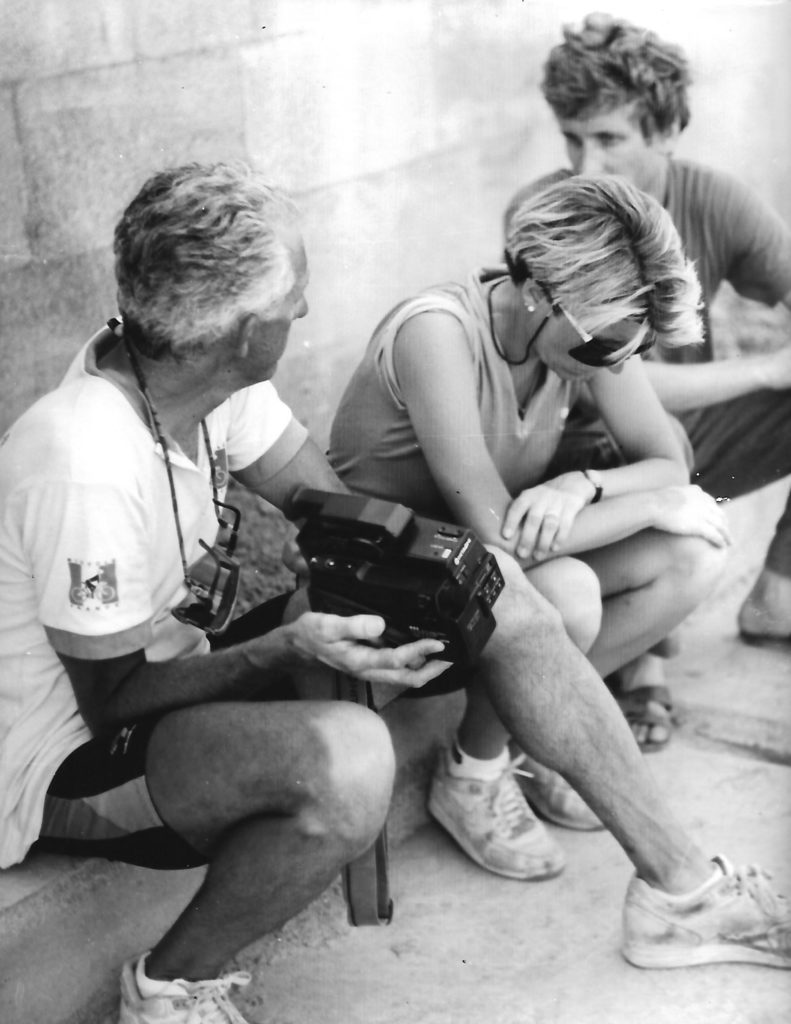
Was the camera big and heavy?
It wasn’t too heavy. I chose it because it fit in the handlebar bag. I used VHS-C – a compact tape, so it was small too. Maybe three inches wide. Every tape ran for roughly 22 minutes.
I’ve been going through all those tapes, and I woke up one morning thinking: I’ll die, and all those tapes will just be gone. So I looked up on Google: how do you preserve tapes? It said: put them on YouTube. So now I am working on uploading them on my YouTube channel.
You have also written three books about bicycle touring.
Yes, My American dream is about my trip across the USA with Victoria. Me and Cat have also published books about our trips together: The African dream and Cuba. The forbidden island revisited – a story from our 3-weeks trip to Cuba cycling and a return trip in 2018.
We’re a cottage industry, we don’t have editors and do everything by ourselves. It’s a struggle, but we do it because we like it. In fact, we’ve got a new book almost ready to come. It will be about the time we cycle across the USA at the beginning of our trip around the world.
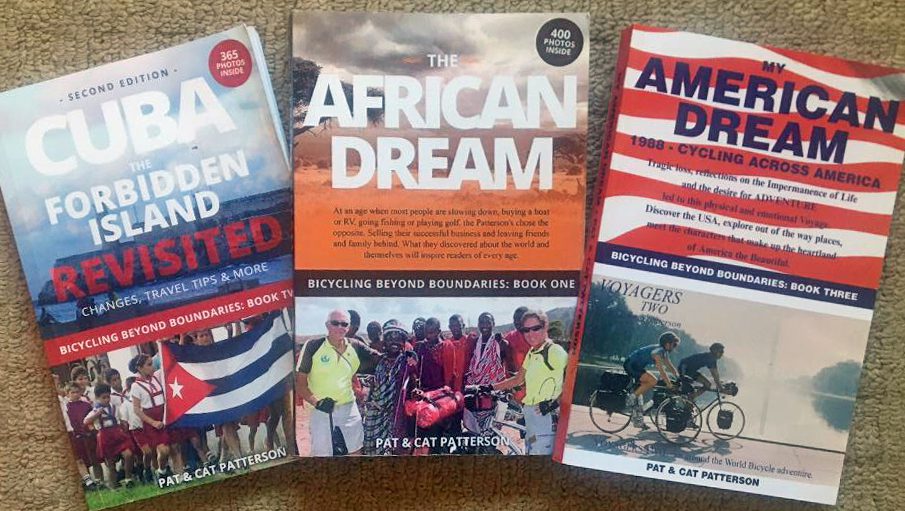
How did your adventure with bicycle-touring start?
I had a son who died when he was 18. It has changed my life. I asked myself: what do I want from life? Do I want a bigger house, a bigger car, make more sales on real estate, or what do I want?
When I went to China with my first wife, I met a young boy in a village, we had a conversation, and I thought, this is what I wanna do. I wanna travel the world and feel like this. Meet people like this. Not just go on tours. My ex wanted tours. I call them plastic bubble saran wrap tours.
We have friends that go on boat cruises all over the world. They only see the place where the boat takes them. Two weeks earlier, the same people were there doing the same dances for the tourists who came there before and will be doing the same thing for the next ones to come. I didn’t want that.
Travelling opens the eyes. As Mark Twain said, it takes away ignorance and stupidity.
You are 82 now. Do you still cycle?
Currently, I cannot cycle because of health problems. I hope to be back in the saddle in a few months. We have this group on Facebook, it’s called The Royal Academy of Octogenarian Cyclists. It gathers cyclists above 80 years old. Once in Belgium, I met a woman over 90 who is still cycling! A lot of people are still doing it at that age!
In life as in cycling, we have got to keep moving. You STOP, you SIT, you may never get back UP!
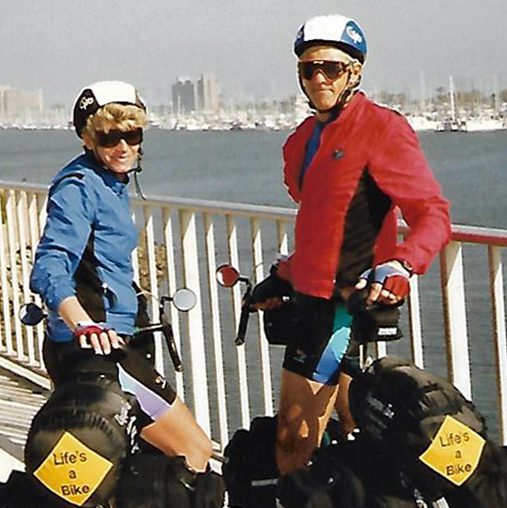
Visit Pat’s and Cat’s website: worldriders2.com
For more videos from Pat’s and Victoria’s journey through the Soviet Union, click here.
You can find videos from their European travels here.
For the videos from their American cycle tour, click here.
If you want to get in touch with Pat and Cat, send them a message at worldriders2@yahoo.com
